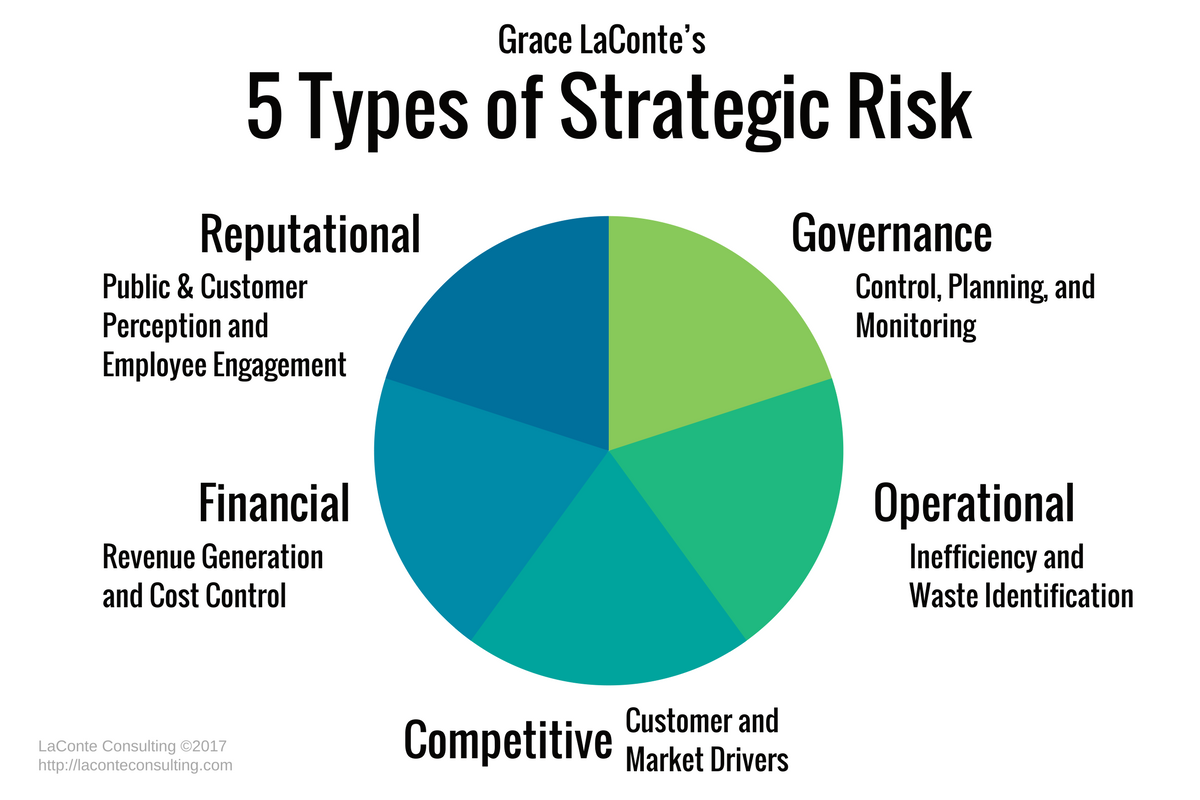Risk Management Strategies For Investors And Businesses
In the world of finance and business, risk is an inherent factor that can affect investment decisions, operational activities, and overall success. However, while risk cannot be eliminated entirely, it can be managed effectively through the implementation of robust risk management strategies for investors and businesses. Whether you're an investor looking to protect your portfolio or a business owner safeguarding your operations, understanding and implementing risk management strategies is essential for long-term success and sustainability.
Author:Emmanuella SheaReviewer:Camilo WoodFeb 23, 2024498 Shares27.6K Views

In the world of finance and business, risk is an inherent factor that can affect investment decisions, operational activities, and overall success. However, while risk cannot be eliminated, it can be managed effectively through the implementation of robust risk management strategies for investors and businesses. Whether you're an investor looking to protect your portfolio or a business owner safeguarding your operations, understanding and implementing risk management strategies is essential for long-term success and sustainability.
Understanding Risk Management
Risk management is the process of identifying, assessing, and mitigating potential risks that could impact an organization's objectives or outcomes. It involves analyzing both internal and external factors that could pose a threat to financial stability, reputation, or operational efficiency. By proactively addressing risks, investors and businesses can minimize potential losses and capitalize on opportunities more effectively.
Common Types Of Risks
Before developing risk management strategies, it's essential to identify and understand the various types of risks that investors and businesses may face.
- Market Risk -Market risk refers to the possibility of financial losses due to fluctuations in market prices, interest rates, or exchange rates. It affects the value of investments and can result in losses for investors or reduced profitability for businesses.
- Credit Risk -Credit risk arises from the possibility of borrowers defaulting on their financial obligations, such as loan repayments or bond payments. It impacts lenders, investors, and businesses that extend credit to customers or counterparties.
- Operational Risk -Operational risk encompasses a wide range of risks associated with internal processes, systems, and human error. It includes risks such as fraud, cyber attacks, supply chain disruptions, and regulatory compliance failures.
- Liquidity Risk -Liquidity risk arises when investors or businesses are unable to buy or sell assets quickly without significantly affecting their market price. It can result in difficulty accessing funds or selling assets at a fair market value.
- Reputational Risk -Reputational risk refers to the potential damage to an individual's or organization's reputation due to negative public perception, scandals, or unethical behavior. It can have long-lasting consequences for investor confidence, customer loyalty, and business relationships.
Effective Risk Management Strategies
To mitigate these risks effectively, investors and businesses can implement the following risk management strategies:
- Diversification -Diversification involves spreading investments across different asset classes, sectors, and geographic regions to reduce the impact of market fluctuations and specific risks. By diversifying their portfolios or revenue streams, investors and businesses can minimize the impact of adverse events on their overall financial performance.
- Risk Assessment and Monitoring -Conduct regular risk assessments to identify potential risks and their potential impact on investment portfolios or business operations. Implement robust monitoring mechanisms to track changes in risk factors and adjust risk management strategies accordingly.
- Stress Testing -Stress testing involves simulating adverse scenarios to assess the resilience of investment portfolios or business operations under challenging conditions. By stress testing their portfolios or operations, investors and businesses can identify vulnerabilities and implement contingency plans to mitigate potential losses.
- Risk Transfer -Consider transferring or sharing risks through insurance policies, derivatives, or contractual agreements. For example, businesses can purchase insurance coverage to protect against property damage, liability claims, or business interruption. Investors can use options or futures contracts to hedge against market fluctuations or specific risks.
- Compliance and Governance -Maintain strict compliance with relevant laws, regulations, and industry standards to mitigate legal and regulatory risks. Implement robust governance structures, internal controls, and risk management processes to ensure transparency, accountability, and ethical behavior.
- Continuity Planning -Develop business continuity plans to minimize disruptions and ensure the continuity of operations in the event of emergencies, natural disasters, or other unforeseen events. Identify critical business functions, establish alternative operating procedures, and allocate resources for recovery efforts.
- Investor Education and Communication -Educate investors or stakeholders about the risks associated with their investments or business activities and provide transparent communication about risk management strategies, performance expectations, and potential outcomes. Building trust and transparency can help mitigate reputational risk and enhance investor confidence.
Advantages And Disadvantages Of Risk Management Strategies
Risk management strategies offer several advantages and disadvantages for investors and businesses. Let's explore both sides.
Advantages
- Minimization of Losses -One of the primary advantages of risk management strategies is the ability to minimize potential losses. By identifying and mitigating risks proactively, investors and businesses can protect their assets and financial stability, reducing the impact of adverse events on their portfolios or operations.
- Capital Preservation -Effective risk management strategies help preserve capital by avoiding unnecessary risks and optimizing investment decisions. By diversifying portfolios, implementing hedging techniques, and monitoring risk exposure, investors can protect their principal investments and achieve more consistent returns over time.
- Enhanced Decision-Making -Risk management strategies provide valuable insights into potential risks and their impact on investment portfolios or business operations. By conducting thorough risk assessments and stress tests, investors and businesses can make informed decisions and allocate resources more efficiently, maximizing returns and minimizing uncertainties.
- Improved Resilience and Adaptability -Implementing risk management strategies enhances resilience and adaptability in the face of changing market conditions, economic uncertainties, or unexpected events. By preparing for potential risks and developing contingency plans, investors and businesses can respond more effectively to challenges and capitalize on opportunities that arise.
- Compliance and Governance -Risk management strategies ensure compliance with relevant laws, regulations, and industry standards, reducing the likelihood of legal and regulatory penalties. By implementing robust governance structures, internal controls, and risk management processes, organizations can uphold ethical standards, maintain transparency, and build trust with stakeholders.
Disadvantages
- Costs and Resources -Implementing effective risk management strategies requires significant investments of time, resources, and expertise. From conducting risk assessments to implementing monitoring mechanisms and developing contingency plans, the costs associated with risk management can be substantial, particularly for small businesses or individual investors with limited resources.
- Overestimation or Underestimation of Risks -Despite their best efforts, investors and businesses may overestimate or underestimate certain risks, leading to suboptimal decision-making or inadequate risk mitigation measures. Overestimating risks may result in missed opportunities or excessive caution, while underestimating risks can lead to unexpected losses or vulnerabilities.
- Complexity and Uncertainty -Risk management is inherently complex and involves dealing with uncertainties and unknowns. Market dynamics, economic conditions, and geopolitical factors can change rapidly, making it challenging to predict and mitigate all potential risks effectively. Managing complex risks requires sophisticated models, tools, and expertise, which may not be accessible to all investors or businesses.
- False Sense of Security -Implementing risk management strategies can sometimes create a false sense of security, leading investors or businesses to become complacent or overlook emerging risks. Relying too heavily on risk management frameworks or assuming that all risks have been adequately addressed can leave organizations vulnerable to unforeseen events or systemic failures.
- Inflexibility and Constraints -Overly rigid risk management strategies may constrain investment decisions or business operations, limiting flexibility and innovation. Striking the right balance between risk management and growth objectives is essential to avoid stifling creativity or missing out on opportunities that could drive long-term value creation.
Risk Management Strategies For Investors And Businesses - FAQs
How Can Businesses Manage Reputational Risks?
Businesses can manage reputational risks by maintaining high ethical standards, delivering quality products or services, fostering positive relationships with customers, employees, and stakeholders, and proactively addressing issues that could damage their reputation. Transparency, accountability, and effective communication are essential for managing reputational risks.
What Role Does Insurance Play In Risk Management For Businesses?
Insurance plays a crucial role in risk management for businesses by providing financial protection against various risks, including property damage, liability claims, business interruption, and employee injuries. Businesses can purchase insurance policies tailored to their specific needs to transfer certain risks to insurance companies.
What Are Some Regulatory Compliance Risks That Businesses Face?
Businesses face regulatory compliance risks related to laws, regulations, and industry standards governing various aspects of their operations, including taxation, data privacy, environmental protection, consumer protection, and labor practices. Non-compliance with regulatory requirements can result in legal and financial penalties, reputational damage, and business disruptions.
Conclusion
In conclusion, effective risk management is essential for investors and businesses to navigate the complexities of financial markets and operational environments successfully. By understanding the types of risks they face, implementing robust risk management strategies, and continuously monitoring and adapting to changing risk factors, investors and businesses can minimize potential losses, capitalize on opportunities, and achieve their objectives with greater confidence and resilience.

Emmanuella Shea
Author

Camilo Wood
Reviewer
Latest Articles
Popular Articles
